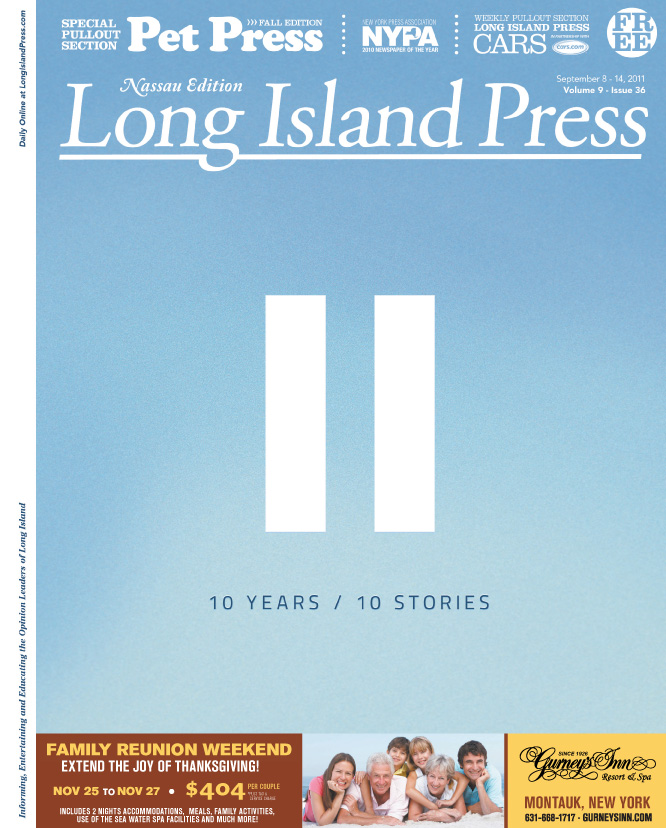
THE ART OF 9/11: How the Attacks on the World Trade Center Influenced the Arts from that Day Forward
New York City garage rock revivalists The Strokes had settled on Oct. 9, 2001 as the domestic release date for their debut LP, Is This It. The album had been recorded in six weeks in the spring of that year, and had been released in the UK—where the band were already stars—on July 31, 2001. Their label, RCA Records, wanted the extra few months to prepare American media for an Is This It publicity blitz. But after the attacks on the World Trade Center, RCA found themselves hastily reworking Is This It for a post-9/11 America. Track 10 on the album, “New York City Cops,” was quickly removed from all domestic pressings of Is This It, due to its chorus, which read, “New York City cops/They ain’t too smart.” At the time, criticizing the NYPD would have been the height of insensitivity—not to mention commercial suicide.
Since then, art around the world, in every medium, has been influenced by 9/11. To recount every one of the works to spring from those images and memories would be literally impossible, but even this very truncated roundup gives some idea how significantly the arts have been affected by that day…
In words: Many of the world’s most celebrated living writers—including Don DeLillo, Philip Roth, Joyce Carol Oates and John Updike—pen novels with 9/11 at their center…but perhaps none are quite as poignant as The Amazing Spider-Man #477, aka “The Black Issue,” which features a solid black cover, and shows how Spider-Man, Captain America, Dr. Doom and other Marvel characters react to the 9/11 attacks. Long Island author Nelson DeMille, in his novel Night Fall, draws a connection between the crash of TWA flight 800 and the attack on the World Trade Center. Poet Richard Howard’s Fallacies of Wonder depicts the pain of trying to remember what the Towers look like.
On television: The TV series Rescue Me showcases the lives of fictional NYC firefighters in the aftermath of 9/11, while the sci-fi drama Fringe references the 9/11 attacks as being averted in an alternate reality. On The Office, Michael Scott panics when he believes an employee is a terrorist.
In song: Shortly after the attacks, country artist Kristy Jackson releases the single “Little Did She Know (She’d Kissed A Hero)” and it is one of the most requested songs on NYC and Long Island radio stations at the time. The release is followed by numerous others including, Bruce Springsteen’s “The Rising,” The Cranberries’ “New New York,” My Chemical Romance’s “Skylines and Turnstiles,” Lupe Fiasco’s “Words I Never Said” Lily Allen’s “Him,” Melissa Etheridge’s “Tuesday Morning,” Tori Amos’ “I Can’t See New York” and Neil Young’s “Let’s Roll.”
In theaters: The memories of an FDNY captain are portrayed as he writes eulogies for his fallen crew in the production The Guys. A survivor of the attacks considers faking his own death in The Mercy Seat. On the big screen, Michael Moore’s Fahrenheit 9/11, a criticism of the “war on terror,” becomes the highest-grossing documentary of all time.
In visual art: Pulitzer Prize-winning author and illustrator Art Speigelman addresses the politics of 9/11 in his 2004 graphic novel, In the Shadow of No Towers. Tribeca artist EJay Weiss watched the first plane crash into the World Trade Center. From the ash outside his studio mixed with paint, he created 9/11 Elegies: 2001-2011.
And, in the largest piece of art inspired by 9/11, “Tribute in Light,” 88 searchlights are turned on next to Ground Zero on the anniversary of the attacks, creating two vertical columns of blue light in the Manhattan skyline where the two towers used to stand, a tribute to the nearly 3,000 people who died in their shadows.







